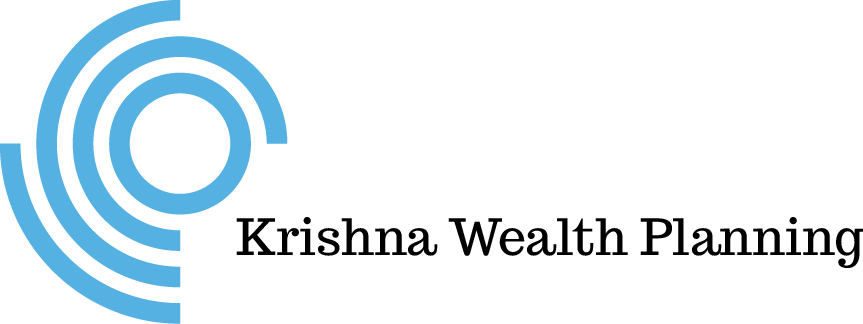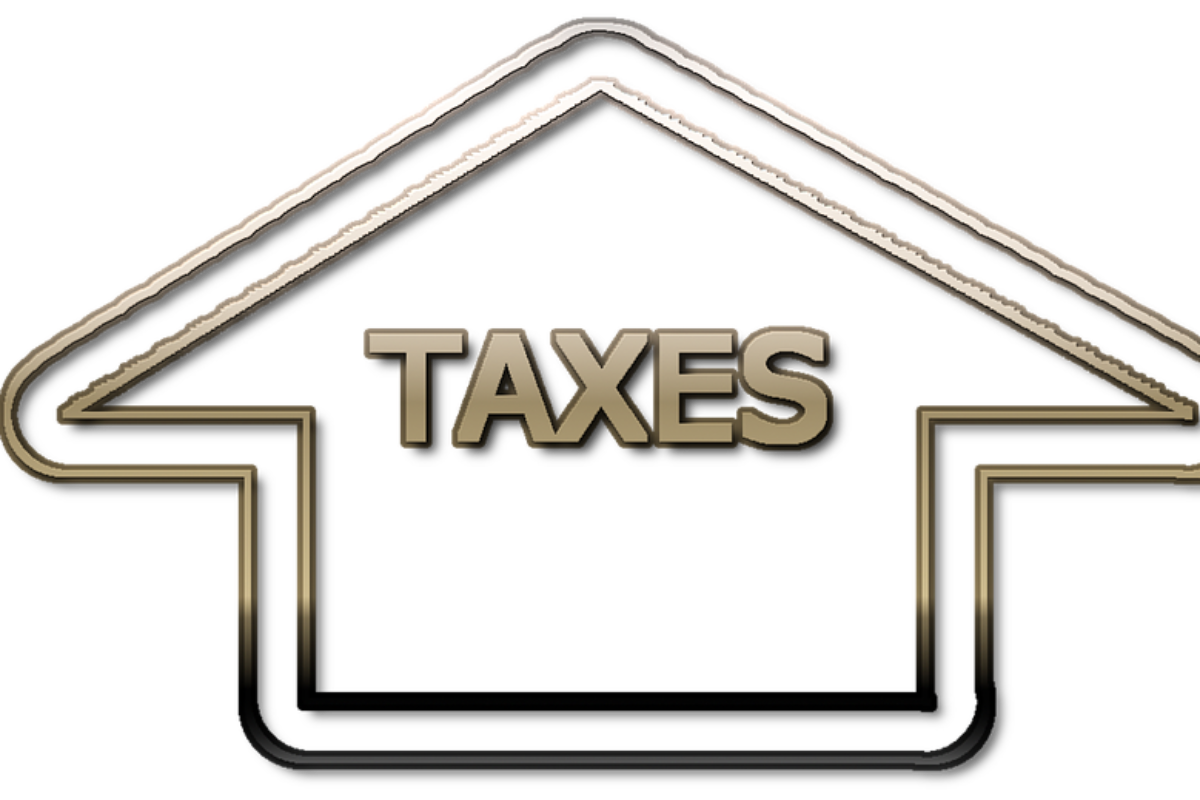“Optionality allows you to benefit from the positive side of uncertainty, without a corresponding serious harm from the negative side.”
– Nassim Nicholas Taleb
Do you ever marvel at the direction your career path has taken? Perhaps it has been a smooth and steady climb. Maybe you encountered bumps in the road. Among other things, you may have dealt with company downsizing, raising a family, taking care of elderly parents, or simply choosing to pursue a different path.
In this piece, I’d like to share a how my own household’s journey unfolded. I had two substantial career transitions, each coming with some financial stress but also yielding surprising tax benefits in the process. I’ll cover how certain decisions we made in both our higher and lower income years contributed to us now having over 80 percent of our retirement assets in tax-free accounts.
A Brief Personal History
Professionally, you may only know me as a financial planner. But I started my career twenty years ago as an electronics engineer. After graduating from Purdue University in 2002, I went to work for IBM in hard disk drive design. My business unit went through transitions over the years and was eventually absorbed into the company Western Digital. A lovely part of my life was spent in Rochester, Minnesota with my wife Pavi. It’s also where my daughter Veda (now 12 years old) was born.
While I enjoyed my career as an engineer, a feeling emerged over the years that it was not the right path for me. This turned into a calling to become a financial planner. I started studying to become a CERTIFIED FINANCIAL PLANNERTM. In Spring of 2011, I sat for the CFP® exam and thankfully passed.
We also made the move to the Dallas, Texas area that same summer. I was fortunate to find an investment advisory firm that was willing to take on a career changer, and it turned out to be a great mutual fit. That firm was acquired two years later by Exencial Wealth Advisors. I had great opportunities in those firms to learn the practical skills needed for financial planning and investment management. The experience prepared me to make the leap to form Krishna Wealth Planning in 2019.
So, it’s fair to say I’ve been through two large transitions in my career. One was changing professions altogether, and the other was starting a business. Both had their scary moments but were ultimately rewarding. Financially, these turned out to be opportunities to take advantage of some planning strategies that we will explore soon.
On Sabbaticals, Mini Retirements and Career Changes
There may be many reasons to depart from your current career path. Are you chasing a life dream? Do you need to rejuvenate physically, mentally, or spiritually? It appears that outlooks towards work shifted during the pandemic. Changing your path is not a decision to take lightly. But you may be interested in finding ways to make work serve your life and not the other way around.
Regardless of what drives a change, one common thread on the financial side is typically reduced earned income. At least temporarily, it could be in the form of lower wages or business income. This often creates a need to live off savings, tap accumulated portfolio assets or even take on debt.
This also leads potentially to a lowering of your household’s tax rate. One rule of good tax planning is to accelerate income when tax rates are low and defer income when tax rates are high.
High and low are relative terms here. You can’t know with certainty what direction tax rates will go in the future. However, you may worry about the risk that tax rates will rise in the future. If you’re in this camp, you might favor strategies to purposely accelerate income (and pay the taxes) in years when you expect to be in a relatively lower tax bracket.
Our Path to 80 Percent Tax-Free Retirement Assets
It’s time to look at some of decisions Pavi and I made. First, let’s make one definition. Retirement assets don’t include cash in bank accounts, after-tax brokerage accounts or less liquid assets like real estate and business interests. Of course, these are important assets as well and contribute to overall financial independence. In this piece, retirement assets do include vehicles like IRAs, Roth IRAs, 401k plans, SEP IRAs, Simple IRAs and so on.
Also, the actions described next were things we did for our household over roughly a twenty-year period. I’m not suggesting these decisions were perfectly optimal nor are they things you should feel obligated to do yourself. My hope is it may open your mind to some new possibilities.
One – We Contributed to (Mostly) Traditional Retirement Accounts
This may sound counterintuitive. But a large portion of the money we were capable of saving went into the traditional retirement accounts. While these accounts were tax deferred, they were by no means tax-free. The tax bill would eventually need to be paid when funds are distributed in the future.
We typically did not maximize contributions to these accounts. Let’s use 401k plans as an example. Today (2021), that would mean $20,500 is allowed as a contribution annually per eligible individual ($27,000 if over age 50). However, one thing we always did was contribute enough to employer plans to obtain full matching contributions when available.
Two – We Made Timely Roth IRA Conversions
The career shifts I noted earlier resulted in us having two tax years where our household income was far less than typical. The most notable year was in 2011 when I was getting my foot in the door for a financial planning career. Pavi also took some time out of the workforce that year to raise our young daughter. The other year was most recently in 2020, which was the first full year I was operating Krishna Wealth Planning.
We used our two lower income years to make strategic and substantial Roth IRA conversions. Determining the amount to convert took some planning and thought. In each of those two years, our goal was to pick an amount that kept us within a certain tax bracket but not jumping into the next higher tax bracket.
For example, suppose you were planning such a conversion this year (2022). It is projecting to be a down income year for your household. If you do nothing, you determine you would be in the 12 percent federal tax bracket. Your goal could be to convert enough money to your Roth IRAs to keep you in that 12 percent bracket but not push you into the next bracket, which is 22 percent.
Say you determine the amount you can safely convert is $50,000. You would then plan to pay an extra $6,000 in federal taxes at the 12 percent rate. But suppose you converted an additional $50,000 you would be in the 22% bracket and need to pay an additional $11,000 in taxes. That would be $17,000 in total additional taxes for a $100,000 total conversion. So, it blends out to a 17 percent tax rate.
This is an overly simplified example. You may need to account for state taxes if you live in a state with an income tax. There are also different tax bracket management opportunities if you’re higher up on the income scale. For example, there’s a jump from the 24 percent bracket to the 32 percent bracket.
Three – We Made Steady Roth IRA Contributions
I often advocate for the use of a savings policy statement. Essentially, it’s a document that helps you articulate not just how much you intend to save but what type of accounts to utilize in the process.
In our case, Roth IRAs have always been a top priority in our family’s savings policy. Looking back at our previous Roth contributions, we maximized in most years starting in 2003 with only a couple of exceptions.
What does it mean to maximize? Today (2022), you can make $6,000 contributions per year for each spouse ($7,000 if over 50) if there is sufficient earned income. Those limits were lower in previous years, but we still tried to take advantage of them.
The other challenge to navigate here are the income limits to making Roth IRA contributions. If your income is above a certain level, you cannot directly make contributions to Roth IRAs. However, tax law still permits you to do them indirectly through the so-called backdoor Roth contribution. I described this strategy in an earlier blog piece, Seven Ways to Maximize Your Tax-Free Assets.
Four – We Used HSAs as a Long-Term Savings Vehicle
Until recently, Pavi and I had access to a health savings account (HSA) through one of our employers. We would make contributions ourselves and possibly get matching contributions from the employers.
I’m treating HSAs in the “tax-free” bucket of assets for the purposes of this piece. There are some caveats to this. But if you distribute money from an HSA, the entire amount is tax-free if it is being used to fund (or reimburse) qualified medical expenses.
The typical way to use HSAs is to withdraw money from them to reimburse your out-of-pocket health expenses. That practically covers most things that are not covered by your health insurance, such as copays and deductibles.
However, if you can afford not to tap into the HSAs, you may be able to invest the proceeds and be in a strong position in the future. I described this strategy in more detail in the blog Do We Underestimate the Benefits of Health Savings Accounts?
Five – We Used “Asset Location” Techniques
There is one less obvious benefit to having tax-free accounts. It’s the idea of asset location. This is different than asset allocation where you decide what portion of your assets are in investments of different risk levels such as stocks and bonds.
While there have been times where we have been invested 100% in equities (stocks), that wasn’t always the case and is not the case today. But one thing we always did was invest in a 100% equity strategy in in our tax-free accounts. Doing so forced us to invest in a relatively more conservative way in our standard tax-deferred accounts. In other words, we “located” our higher risk assets in the tax-free accounts.
The idea behind this is playing the long game. We believe that investments like stocks have a higher expected return than bonds. We don’t expect that to be the case each year but do expect the odds to be in our favor over time. Assuming we could capture a higher return, we preferred to capture that return in our tax-free accounts.
Has it turned out that way so far? Yes, thankfully. For example, using our Roth IRAs, I loosely estimate those have grown at annualized rate of around 8.4 percent for me (since 2003) and 11.7 percent for Pavi (since 2008)4. By contrast, the US bond market since 2003 has grown at annualized rate of around 3.6%5.
Clearly Pavi must have some secret. I think there are some good explanations for the return difference. Or maybe I should just accept that women are better investors than men.
The Result
All these actions contributed to us now having 80 percent of our retirement assets in the tax-free bucket. Technically, it’s 81% at the time of this writing. If you’re interested in knowing what dollar amounts are involved, I’m happy to share that in a direct discussion. For us, it’s enough that we don’t anticipate needing to save much more in these types of accounts to reach our own financial independence goals.
Bonus – Don’t Neglect the Standard Taxable Accounts
A side note is in order. One other thing we tried to do regularly over the years was to build sufficiently large non-qualified (or non-retirement) assets. I realize that with all tradeoffs involved in life, it is not easy for people to do both.
I mention this because if you’re planning to go through a career transition of your own, you probably will need money to live on during the transition time. If you do engage in large Roth IRA conversions, you’ll also need the money to pay the taxes on those conversions.
Standard brokerage accounts are not tax-free. You pay taxes each year on the amount of interest, dividends and capital gains produced. Some call this a “tax drag”. But it’s not always bad. In lower household income years, you might be able to take advantage of the lower capital gains tax rates.
For example, a married couple in 2022 can pay a 0 percent tax rate on capital gains if total taxable income is kept under $83,350. Even the next bracket for capital gains is “only” 15 percent. In some ways, it is like the bracket game described earlier with Roth IRA conversions. Personally, we never did any extreme versions of capital gain “harvesting”, but this may be an overlooked area of opportunity for some families.
A final benefit of standard taxable accounts is that you can build some debt planning flexibility. I describe that in more detail in the piece The Value of Having Debt Capacity.
Lessons and Takeaways
Sharing this story is not meant to be prescriptive. My path is not one I would necessarily recommend to a client. The context of your own work and family dynamics is important. The story is only meant to show that sometimes transitions in your professional life can present opportunities. If you take advantage of those opportunities, you might mitigate the long-term financial impact or possibly get financially stronger.
Admittedly, any career transition can be scary due to the uncertainty of what the future holds. It’s a risk and there’s no guarantee you will end up wealthier. Yet I will say that facing and overcoming fear has other intangible benefits. In the end, you may need some luck and fortunate timing too.
Only in the future will we know if the decisions we personally made turn out to be beneficial. Going back to the quote at the beginning of this piece from Taleb (from his amazing book Antifragile), we always had optionality in our decisions. If tax rates somehow move lower in the distant future, our decisions may turn out to be suboptimal, but we wouldn’t face serious harm. If tax rates move higher, and a case can be made for that, we’ll gain more freedom in our retirement distribution strategy. We must remember to judge decisions by the process taken and not necessarily the outcome.
Speaking of retirement, I have no intention of doing that anytime soon given how much I love the work I do. But I am curious to see what direction this “80 percent ratio” will go from here. I anticipate that most of our family’s future savings are likely to be done in traditional pre-tax retirement accounts. All else equal, our tax-free ratio should reduce over time. But if there’s any good takeaway from this piece, it is to be willing to adapt.
If such circumstances never appear for you during your working years to maximize your tax-free assets, don’t fret. There are often versions of the strategies I used that can be done in the early years of your retirement. There is a lot of flexibility in having even a smaller portion (say 20 percent) of your retirement assets in the tax-free bucket. It may not be wise to force it. Create a game plan, perhaps with your financial planner to really flush out the pros and cons. Remember that is a long game to reap the rewards.
If you have comments or questions on this piece, please drop me a line at: [email protected]
References
1. https://www.cfp.net/why-cfp-certification/the-standard-of-excellence
2. https://krishnawealth.com/seven-ways-to-maximize-your-tax-free-assets/
3. https://krishnawealth.com/do-we-underestimate-the-benefit-of-health-savings-accounts/
4. Footnote – Internal rate of return estimate using annual cash flow timings of contributions and conversions to Roth IRAs. First year of funding for Neil was 2003 and first year of funding for Pavi was 2008.
5. Footnote – Courtesy of Portfolio Visualizer using the Vanguard Total Bond Market Index (ticker VBTIX) from Jan 2013 to March 2022
6. https://krishnawealth.com/the-value-of-having-debt-capacity/
7. https://www.amazon.com/Antifragile-Things-That-Disorder-Incerto/dp/0812979680
The information on this site is provided “AS IS” and without warranties of any kind either express or implied. To the fullest extent permissible pursuant to applicable laws, Krishna Wealth Planning LLC (referred to as “KWP”) disclaims all warranties, express or implied, including, but not limited to, implied warranties of merchantability, non-infringement, and suitability for a particular purpose.
KWP does not warrant that the information will be free from error. None of the information provided on this website is intended as investment, tax, accounting or legal advice, as an offer or solicitation of an offer to buy or sell, or as an endorsement of any company, security, fund, or other securities or non-securities offering. The information should not be relied upon for purposes of transacting securities or other investments. Your use of the information is at your sole risk. Under no circumstances shall KWP be liable for any direct, indirect, special or consequential damages that result from the use of, or the inability to use, the materials in this site, even if KWP or a KWP authorized representative has been advised of the possibility of such damages.
In no event shall KWP have any liability to you for damages, losses, and causes of action for accessing this site. Information on this website should not be considered a solicitation to buy, an offer to sell, or a recommendation of any security in any jurisdiction where such offer, solicitation, or recommendation would be unlawful or unauthorized.





